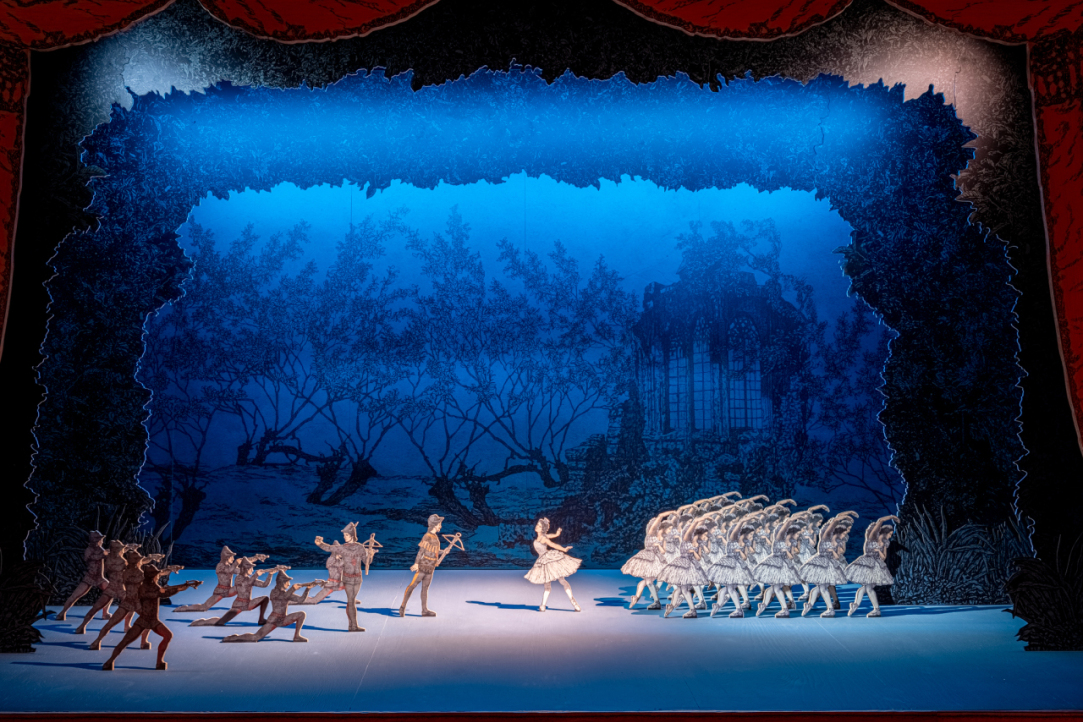Works by Teachers from HSE Art and Design School in St Petersburg Featured in Exhibition about Russian Ballet at Manege

Andrey Punin, head curator of the Environment and Interiors profile, and Ekaterina Filipenko, lecturer at HSE Art and Design School in St Petersburg, took part in the exhibition ‘First Position. Russian Ballet’. The exhibition is open until May 21 in the Manege Central Exhibition Hall in St Petersburg.
The exhibition at the Manege tells the story of the creation and development of ballet, and shows how it was influenced by related historical events. Visitors to the exhibition will learn about the lives and work of famous ballet masters, choreographers, composers, and dancers. Separate halls of the exhibition are dedicated to Sergei Diaghilev’s Russian Seasons.
The exhibition features costumes, sculptures, paintings, graphics, documents, and personal effects from 40 museums, archives, and libraries in St Petersburg, Moscow, and other Russian regions. The exhibition combines classic exhibits with large-scale multimedia and digital installations.
Andrey Punin, curator of the Environment and Interiors profile, and Ekaterina Filipenko, lecturer at the HSE Art and Design School in St Petersburg, created installations for the project—reconstructions of the Orpheus, Swan Lake, and Le Corsaire ballets—as well as a portal dedicated to Sergei Diaghilev. Agniya Sterligova, head of the Planet9 architectural bureau, was the project’s architect.
Ekaterina Filipenko, lecturer at the HSE Art and Design School in St Petersburg
I was invited to participate in a very interesting project representing the history of the Russian ballet as a unique phenomenon in world culture. As an illustrator, I was very interested in creating installation-reconstructions of the first ballets, such as Orpheus (which was first staged in the Moscow Kremlin in 1672), and the first production of Swan Lake (staged in 1894). I like when an illustration leaves the page and goes into the museum space, becoming a living means of communication with the viewer. In the kinetic installation Le Corsaire, the illustration literally comes to life, immersing the viewer in the mechanics of the theatre backstage.
Agniya Sterligova, project co-creator and architect, founder and CEO of the Planet9 bureau
The exhibition theme already prompts us to think about synthesis of the arts. Any ballet production is always a collaboration between a composer, a production designer, a choreographer, and a dancer. One of our tasks was to bring independent creative forces into co-authorship, and working with Ekaterina Filipenko and Andrey Punin has been the embodiment of this principle; they have done their part completely independently. I am infinitely happy with this kind of collaboration. As in ballet, everyone had a solo role in the exhibition. All of this together has produced a good result.
Anna Yalova, concept co-creator, Director of the Manege Central Exhibition Hall
Ballet as an art form has always held a special place in our culture. When working on this exhibition, it was particularly important for us to use artistic language to tell the audience the history of ballet’s development and formation in Russia, highlighting the most important historical milestones, significant productions, and outstanding masters.
The exhibition ‘First Position. Russian Ballet’ runs until May 21, 2023. The exhibition hall is open from 12 pm to 9 pm on weekdays and from 11 am to 9 pm on weekends and holidays. More information about the exhibition can be found here.

